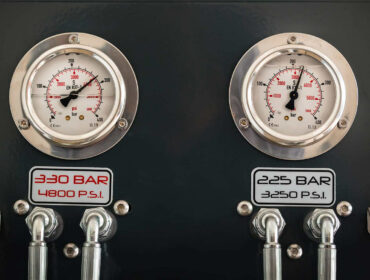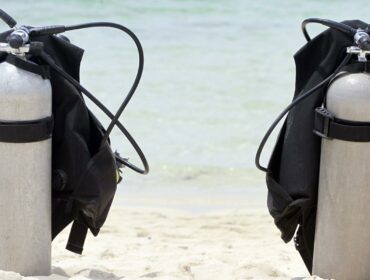Even though most divers will seldom find the need to buy their own Scuba air tank compressor, it often helps to understand the process by which our dive tanks get filled.
A compressor like a pump, essentially increases the pressure of a gas while reducing its volume so that a larger quantity can be carried by diver in a smaller air tank. A Scuba compressor unlike an ordinary compressor needs to perform two tasks; compress air to very high pressures in excess of 3000PSI and secondly filter and purify the air to make it fit for breathing.
Featured above: Max-Air 90 Standard Gas Compressor available at Scuba.com
The most common type of scuba air compressors involves staged compression where air is compressed to increasing pressures and cooled after each stage. In very basic terms a compressor works in three stages. Air is sucked in through an air filter into the first stage where a large piston compresses the air down to around 100-140psi. The air leaving the first stage is hot as heat is generated as a byproduct of the compression. This needs to be cooled before it enters the second stage or it would ruin the pump. Hence the air is passed through an inter cooler coil that dissipates the heat before being sucked into the second stage where a piston compresses the air again to around 800 to 1,000 psi. Once again the air is passed through inter coolers and before entering the third stage passes through a moisture removal separator , that allows the moisture from the air to trickle out the bottom and sends only the dehumidified air into the third stage where the air is compressed up to 5000psi. From the third stage the air is once again cooled using the inter cooler and once again passed through a moisture separator or two before being fed into a Scuba tank at 2700-3000Psi using a bleed valve.

Featured above: Max-Air 35 Compressor from Scuba.com
As a diver’s life quite literally depends on the quality of breathable air in the scuba tank, air filtration is an integral component of scuba air compressors and ensure clean odorless and moisture free air. A Scuba Air compressor must remove water/moisture and oil which the moisture separator and desiccant filter handles. Next Carbon Monoxide must be rendered harmless using a catalyst that oxidizes the Carbon Monoxide (CO) in the air, into harmless Carbon Dioxide (CO2). Carbon Dioxide in high concentrations can kill a diver and hence that too must be reduced using Activated Carbon filter cartridges and a molecular sieve. Other Hydrocarbons are also removed when passed through the filter cartridges and molecular sieves that render the air fit for diving.
Now you know why scuba compressors are so expensive. Usually larger compressors used at dive shops pump air into a large tank from which it can be re-distributed to smaller scuba tanks, making the process much quicker. Portable air compressors are perfect for a recreational diver, but can often take time to fill cylinders.



